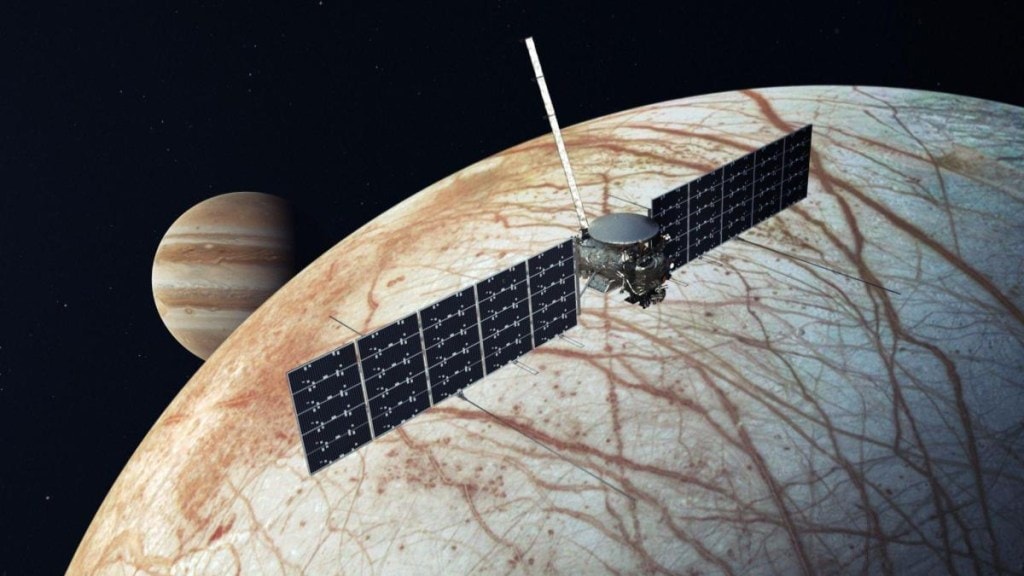NASA launched its Europa Clipper spacecraft on Monday, embarking on a monumental mission to explore Jupiter’s icy moon Europa, which harbors a vast hidden ocean beneath its frozen surface. The spacecraft will spend 5 ½ years journeying through space to reach Jupiter, aiming to uncover whether Europa’s subsurface ocean might contain the essential ingredients for life.
Europa is considered one of the most promising places in the solar system to search for signs of life, as scientists are almost certain that an extensive ocean lies beneath its icy crust. Though the Europa Clipper will not be equipped to directly detect life, its primary mission is to gather vital clues about Europa’s habitability by examining its surface and subsurface composition for organic compounds and other potential indicators of life-friendly conditions.
“Ocean worlds like Europa are not only unique because they might be habitable, but they might be habitable today,” said NASA’s Gina DiBraccio before the spacecraft’s launch.
The $5.2 billion mission, launched aboard a SpaceX Falcon Heavy rocket from Florida’s Kennedy Space Center, faced some last-minute challenges. In the spring of this year, NASA discovered that Clipper’s transistors could be more susceptible to Jupiter’s intense radiation than initially thought. This radiation, equivalent to millions of chest X-rays during each of Europa Clipper’s 49 flybys, forced a months-long review of the mission. Ultimately, the space agency decided to proceed with the mission, confident in its design.
Adding to the launch’s complexity, Hurricane Milton caused several days of delays. But on Monday, Europa Clipper successfully began its 1.8 million-mile (3 billion-kilometer) journey.
The spacecraft, roughly the size of a basketball court with its solar wings extended, will use gravity assists from Mars and Earth on its way to Jupiter. Once there, in 2030, it will orbit the gas giant every 21 days. At times, Europa Clipper will skim just 16 miles (25 kilometers) above Europa’s surface, much closer than any previous mission. During these close encounters, onboard radar will probe the moon’s ice sheet, thought to be 10 to 15 miles (15 to 24 kilometers) thick, and measure the depths of the ocean below, which may be more than 80 miles (120 kilometers) deep.
Equipped with nine scientific instruments, Europa Clipper’s electronics will be housed within a vault lined with dense zinc and aluminum walls to protect it from Jupiter’s relentless radiation.
The mission will continue until 2034, and if scientists find favorable conditions for life, it could suggest that other ocean worlds in the solar system, such as Saturn’s moon Enceladus, might also harbor life.
(With inputs from Associated Press)

